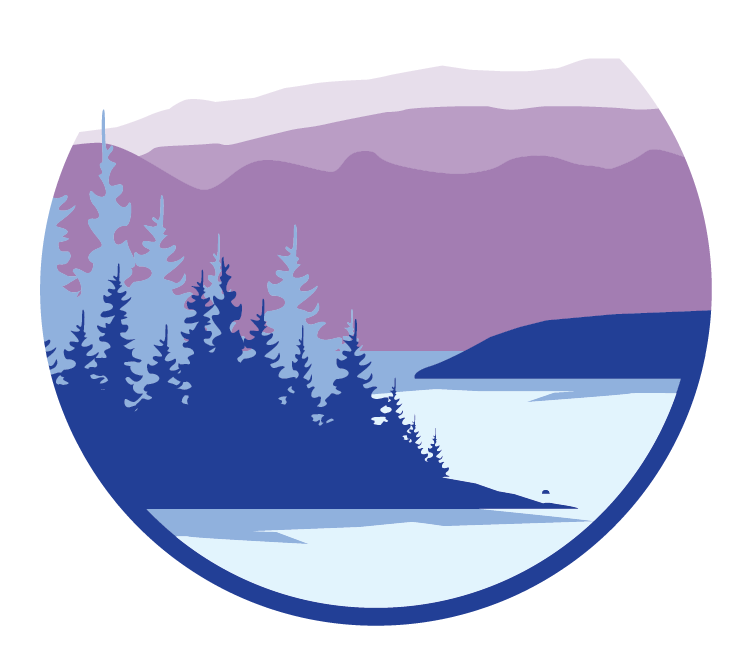
The Flathead Lake Monster
Flessie — or as some lovingly call her, Flossie — is the elusive creature said to dwell in the depths of Flathead Lake. You have to be lucky to catch a rare glimpse of her. Since the first reported sighting in 1889, over 100 accounts of large, unusual creatures have been documented in Flathead Lake.
Tales from the Deep
People describe a large eel-shaped creature that is 20 to 40 feet long. It is round, brown to blue-black in color, and has striking steel-black eyes and undulating hips. Some sightings identify it as a massive fish between 6 and 10 feet in length — possibly a sturgeon. There are one or two reported sightings most years, though some years, like 1993, have brought in a flood of reports.
Laney Hanzel, Flathead Lakers former board member and retired fisheries biologist, and Paul Fugleberg, long-time historian of monster sightings and former editor of the Flathead Courier, collected 13 separate reports — the most ever in a single year. But Laney would prefer we don’t call it a “monster,” but rather a creature.
A photo of the creature? Or just a camera glare?
Sightings have come from mothers, doctors, lawyers, biologists, engineers, anglers, and policemen. Both first-time visitors and life-long residents have seen it. The credibility and diversity of those reporting have helped to keep the legend alive.
So, keep your eyes open and be extra alert when traveling in the areas around Skidoo Bay, Polson Bay, The Narrows, and along the west-shore road. You never know when you might see Flessie.
If you do see a creature out on Flathead Lake, please contact the Flathead Lakers. We won’t laugh or make fun — we will sincerely record your sighting and add it to the historical archive of the Flathead Lake Monster.
Report Your Sighting
Flathead Lakers maintain a growing archive of monster sightings. If you see something strange — in the water, near the shore, or just under the surface — let us know. Every account adds to the long, strange, and wonderful history of Flessie.
Indigenous Origins: The Kootenai People’s Story
Long before settlers arrived, the Kootenai people, one of the Confederated Salish and Kootenai Tribes, told stories of a great creature inhabiting what they called “Monster Lake.”
According to oral history shared by Kootenai elders Catherine and Louise Andrew, a bird’s wife used to feed huckleberries to a friendly lake creature. But when the bird’s jealous husband discovered this, he killed the monster. The creature’s body became what is now called Sullivan Hill, near Elmo on the lake’s western shore. For years, tribal members pointed to red patches along the hillside as signs of the monster’s spilled blood, though these have since faded.
These stories were passed down in Kootenai and documented through efforts to preserve tribal languages and traditions. They reflect a deep connection to and respect for the lake and its mysteries — stories told not to explain the unexplainable, but to remind listeners of what lies beneath.
Modern Perspectives or Fishy Explanations?
In 1955, C. Leslie Griffith captured a 7.5-foot, 181-pound white sturgeon near Dayton. The massive fish was displayed at the Polson-Flathead Historical Museum and fueled theories that sturgeon — rare, deep-dwelling, and prehistoric-looking — might be responsible for the sightings.
However, Barry Hansen, fisheries biologist for the Confederated Salish and Kootenai Tribes, notes that there’s no native sturgeon population in Flathead Lake today. Those few that were caught in the past were likely introduced. Other biologists suggest that waves, logs, large fish, or tricks of light may explain some encounters — but not all.
A Cultural Icon
The Flathead Lake Monster is more than a mystery. It’s a beloved part of regional identity. In 2024, the city of Polson installed a 25-foot bronze statue of the creature in Sacajawea Park, right next door to the Flathead Lakers office! It’s a nod to the enduring fascination, and a sign that Flessie has swum beyond myth into community lore.
That same year, Woods Bay author Butch Larcomb released his book, Historic Tales of Flathead Lake, which dives into the lake’s legends, history, and lore — including a dedicated look at the monster sightings. Through detailed research and engaging storytelling, Larcomb brings the mystery of Flessie into context alongside real people and places around the lake.
Signed copies are available on our website. Click here to order.
Next time you visit Flathead Lake, look twice at every ripple. Legends don’t live this long without a little truth beneath the surface.
Keep the Real Monsters Out of Flathead Lake
Zebra and quagga mussels are invasive species that threaten the health of our lake and rivers. They clog infrastructure, damage ecosystems, and are nearly impossible to remove once established. Clean. Drain. Dry. every time you leave the water.
Learn more about invasive mussels and how to prevent their spread.
Sources
Polson-Flathead Historical Museum. “The Flathead Lake Monster.” Accessed April 9, 2025. http://www.polsonflatheadmuseum.org/the-flathead-lake-monster/
NBC Montana. “Tracking 129 Years of Flathead Lake Monster Sightings.” August 14, 2018. https://nbcmontana.com/news/local/tracking-129-years-of-flathead-lake-monster-sightings
Flathead Beacon. “In Search of the Flathead Lake Monster.” May 29, 2023. https://flatheadbeacon.com/2023/05/29/in-search-of-the-flathead-lake-monster/
Bigfork Eagle. “Woods Bay Author’s Book Delves into Secrets of Flathead Lake.” July 24, 2024. https://bigforkeagle.com/news/2024/jul/24/woods-bay-authors-book-delves-into-secrets-of-flathead-lake/
Native News Project. “Kootenai Legends and Language: Preserving the Stories.” University of Montana School of Journalism, 2014. https://nativenews.jour.umt.edu/2014/?page_id=18
Salish Kootenai College Tribal Collections Guide. “Oral Histories and Cultural Records.” Accessed April 9, 2025. https://library.skc.edu/wp-content/uploads/2020/01/Salish-Kootenai-Tribal-Collection.pdf





